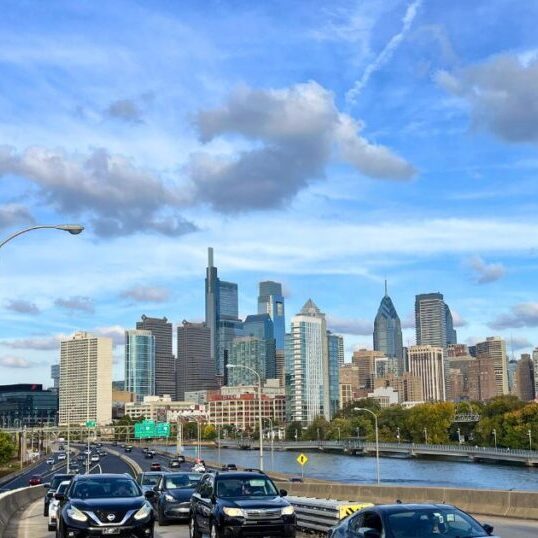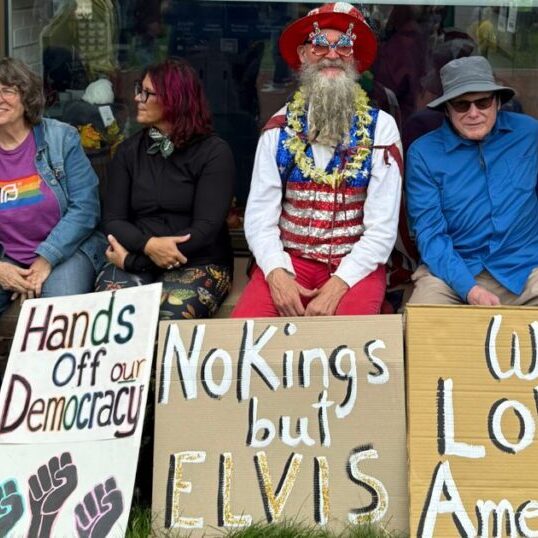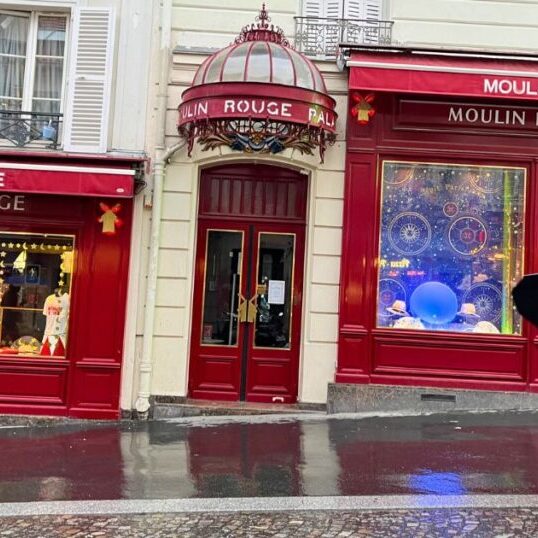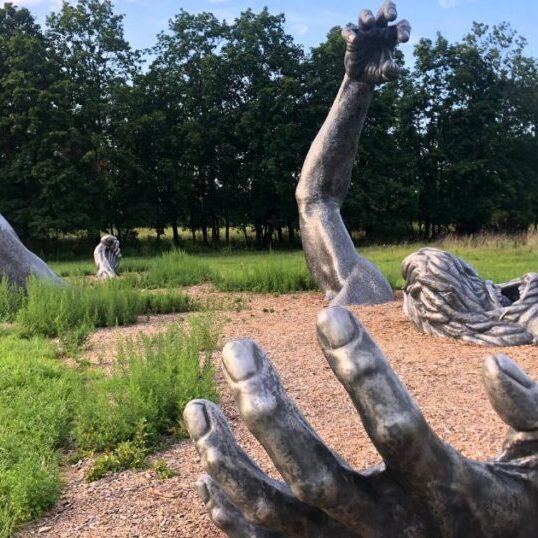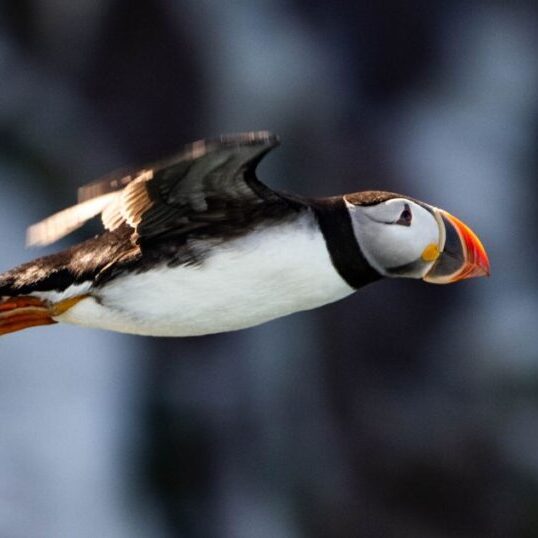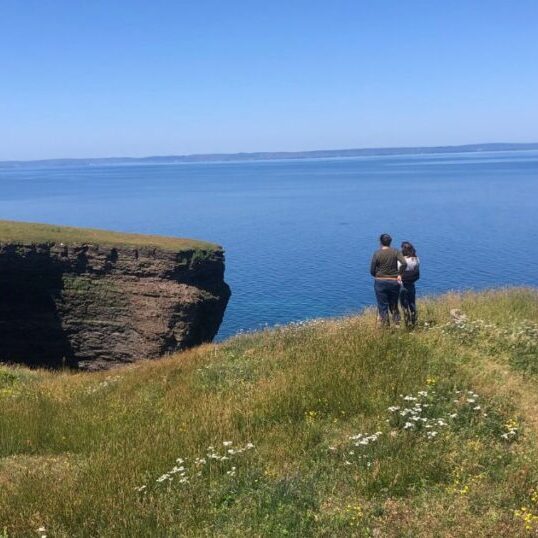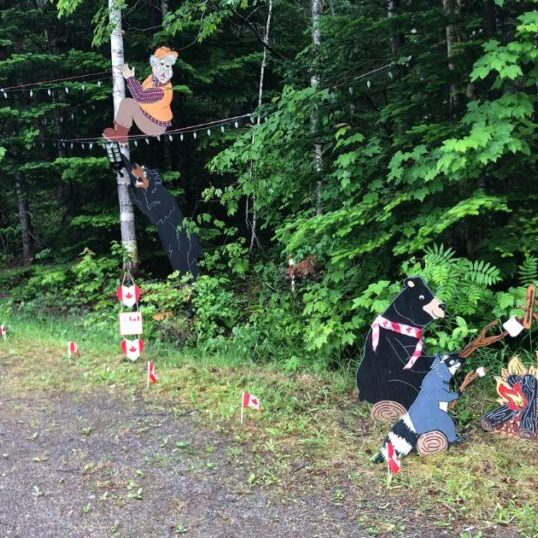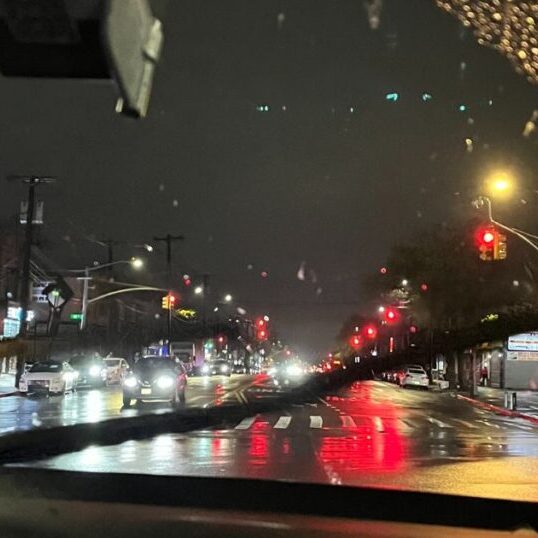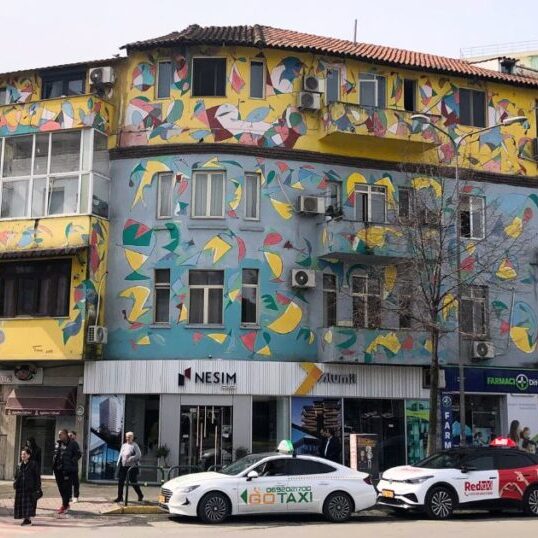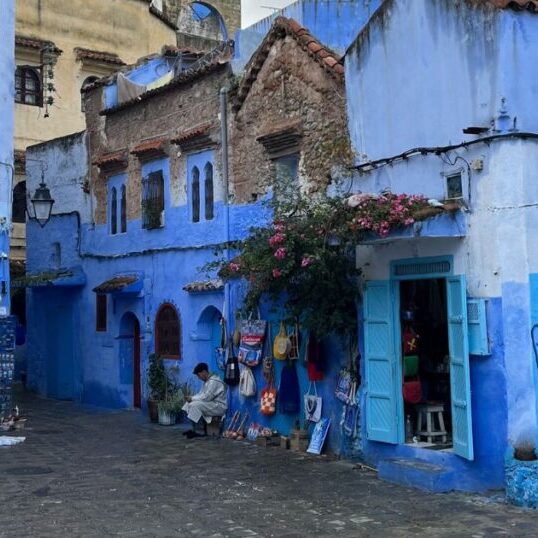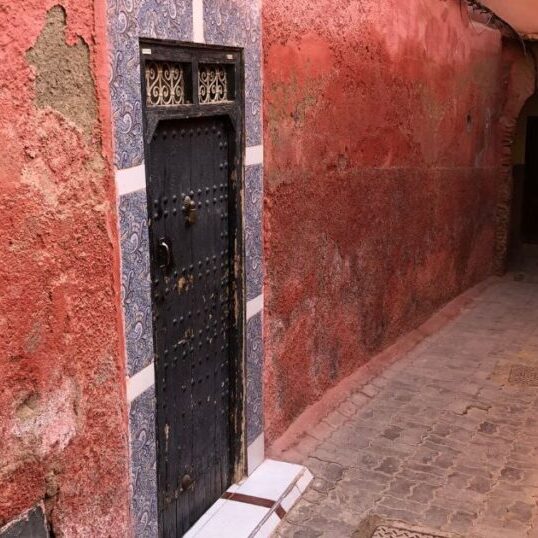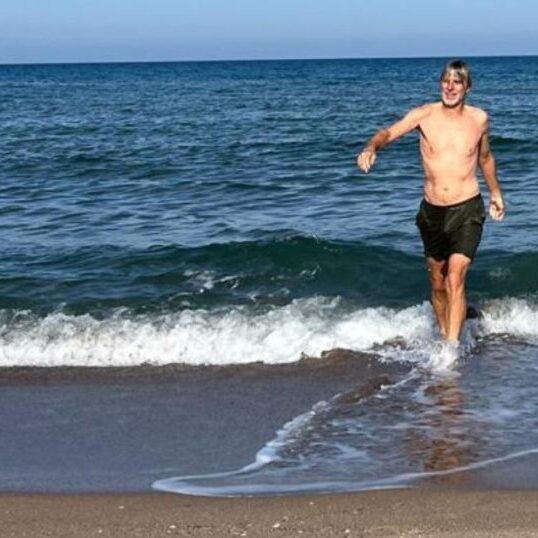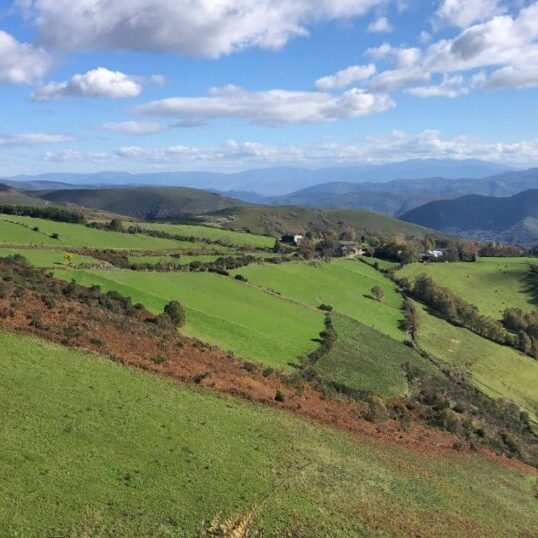Hike Around Alderney (all 10 miles of it)
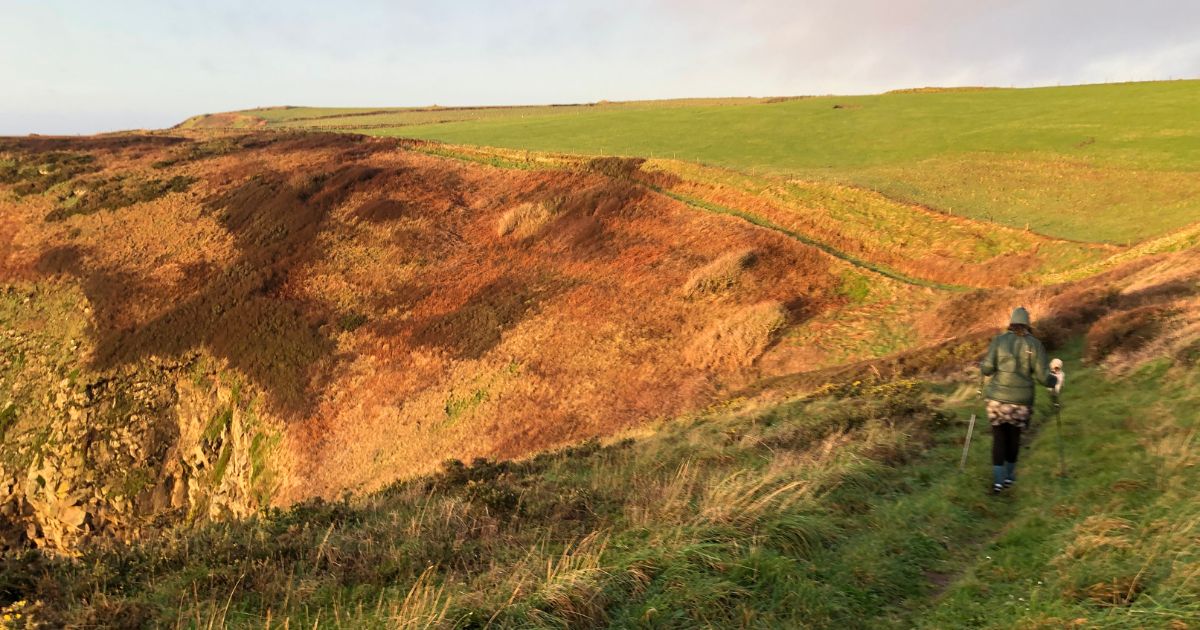
The sweet and salty are swirled together. Beauty framed by tragedy, today’s Peace tinged by yesterday’s war, carefree days more poignant after last night’s nightmares. Alderney is a yin-yang paradise of light layered over a heavy, dark past.
On a warm (10 degrees) sunny (ish) February morn we set out to walk around the entire country of Alderney. No-one seems quite sure of its “country” status - they’re under British protection and get UK passports, but they have their own government, money, laws and quirky culture. Regardless, everyone is sure it’s the most beautiful island in the world, and 16km from now I will have to agree.
We start at the grassy airstrip we flew into a few days ago in the 19-seater, low-as-a-Nepal-hotel-room, puddle-jumper airplane. The field is secured by a low fence with signs saying trespassers will be dealt with in accordance with “the law”, but locals laugh that there actually is no law. There is a lone policeman, empowered to give out stern Warnings for parking violations, lonely as the Maytag Dishwasher Repairman - this island is so safe and tight that I easily slip into the habit of leaving the car keys in the ignition, and the owner of our house-sit house doesn’t even know where his door keys are anymore.

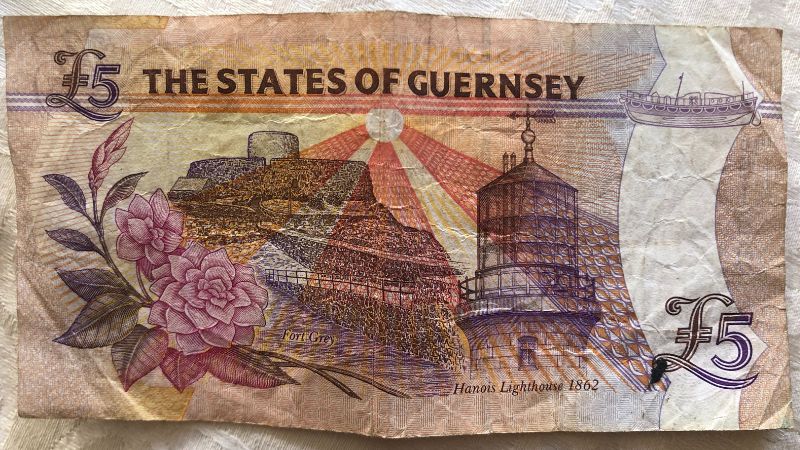

This first section of trail is locally known as the “Up and Down Cliff Trail,” emerging from deep ravines to wind through sheep and cow pasture land that until quite recently was commonly grazed. The narrow grassy trails are well-maintained by the Alderney Wildlife Trust, those lovely people (volunteers, of course) who gave us the map of myriad coastal and inland trails which, by the end of 3 weeks here, we will have explored 98% of (our thankful dog will have lost 2kg in the process - we average 12,000 steps a day, happily back in our Camino mode).
We sit on one of the plentiful memorial benches and look across the English Channel at the Normandy coast of France just 8 miles away. These Channel Islands were once part of the Duchy of Normandy, and most of the street and house and field names are still in the Normandy/Alderney French dialect. Loyalties and countries and old wars, and even the ugly US politics that have somehow seeped their venom into local musings, are blown away in the ever-present fresh wind, leaving us fully present on just Alderney - none of the rest seems to make sense or touch us today.





But war and nationalism are deeply-carved scars in the bedrock of this tranquil island. Within 2 miles we come upon the Essex Castle, the first of eighteen forts and batteries we’ll pass today, making Alderney one of the most heavily fortified islands in the world. Now a private residence, it was built in the 1550’s by Henry VIII to overlook a new 'harbour of refuge and observation', as a base for a British fleet against any potential invasion by the French.
Down below at that harbour is “The Nunnery” - actually a Roman fort from 350 AD that someone thought looked like a nunnery and the name just stuck. From there, the beach is shrouded by an imposing 20 foot-high concrete anti-tank wall that casts a cold looming energetic shadow across what should be a paradise beach playground. Locals do come here to walk their dogs (or swim, as we will later), but with shoulders hunched and heavy, their steps hurried as if trying to escape from under the dark energy of the German occupation.
Alderney was evacuated in 1939 when the Germans invaded, refortifying the old British forts and erecting these new walls, bunkers, gun placements, and sentry towers as part of Hitler’s “Atlantic Wall.” Three excellent documentaries at the Alderney Information Centre cover what they call their island’s “dark period.” The first film shows the heartbreak of leaving their beloved home (including having to shoot their pets) to dwell in exile in Scotland for 6 years. The next film covers the atrocities committed by Germans - looting of houses, unspeakable horrors of the four concentration camps they created in order to build the fortifications.
The third film starts with the tears of the islanders returning at last to their homes, now littered with fortifications, mines, dead animals, rat infestation, and houses with all the floorboards pulled out for firewood. But they speak softly of the human connection they formed with the German occupiers-turned-prisoners who stayed to help rebuild, and in some cases married into the community. The government had considered never returning the people and instead using the island as a military training base, but the resilient residents rebuilt their lives and moved on - not forgetting, but focussing on returning to their healthy lives.
Alderney has many more grandparents than grandchildren (there’s a long queue to get into the solitary Connaught Care Home - our friend Thankful cheerfully saves DVD’s in her “Connaught Pile” to finally watch when the time comes). These seniors were the children from the first film, shipped away first to Edinburgh nunneries until their parents could come find them. In their memories this was all a grand adventure, as was returning to this mysterious island 6 years later where they had real German artillery guns to play with and bunkers to hide in. One of the losses was the Alderney French dialect - these children had been raised on Scottish and English and never went back.
They do recall the infamous “Battle of the Buttes”. The judge who governed the island upon repatriation grew weary of finding the right owners of all the furniture the Germans had moved around, so on weekends he would pile dressers and tables into a Hunger Games-style cornucopia up on the buttes, blow a whistle, and whoever touched a piece first got to take it home. For years after, people were afraid to have friends over lest they find their grandma’s chair in the dining room. And when that did happen, the neighbours would inevitably agree to a furniture swap to maintain the peace and slowly let the puzzle pieces sift down to their proper places.


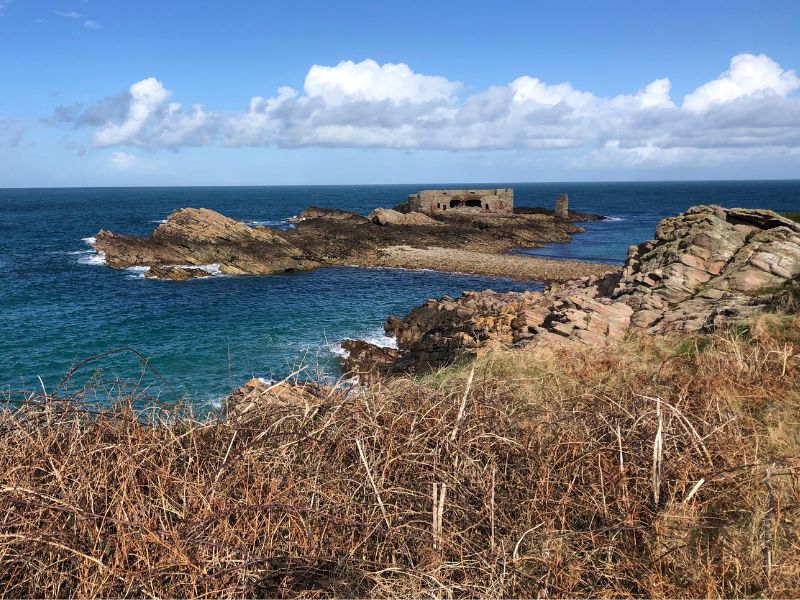


At about mile 4 we round the point and pass under the lighthouse - a refreshing beacon of hope and safety rather than oppression. This flatter end of the island is the closest we’ll get to England, 163 miles away. The path veers back through the campsite where even locals often come for a “get-away” in the summer, across the railroad track that services the rock quarries and summer tourists, way up and over another German-bunker-littered hill with another fort (Albert) on top, then along the broad sandy Braye Bay to the harbourfront.
Happily, The Brave Chippy is open to feed these now-tired hikers. These owners also operate the Indian restaurant in town, so we optimistically order samosas, only to see him a minute later with a big bag of frozen Costo-esque samosas. The fish and chips are fresh and perfect, though, and we gaze out at the 1,430m-long breakwater. The merciless waves pounding and crashing over it are testimony to the wisdom of both engineers and locals who advised against its construction, but thanks to constant maintenance (they had to convince the Germans not to neglect it during the occupation) it still provides a safe harbour for an armada of summer sailboats, and a lifeline of supplies from Southampton.
Also in this tiny settlement is The Channel Jumper, the locally-owned shop that makes “Longis” - the traditional Guernsey-style sailors jumpers (sweaters) with such a tight weave that they’re basically waterproof. After being cold for our first few days we custom-order one each, and will never feel cold again. They cost a splash more than the typical T.J.Maxx fast fashion, but of such high quality we’re assured they’ll be passed on to our grandchildren.



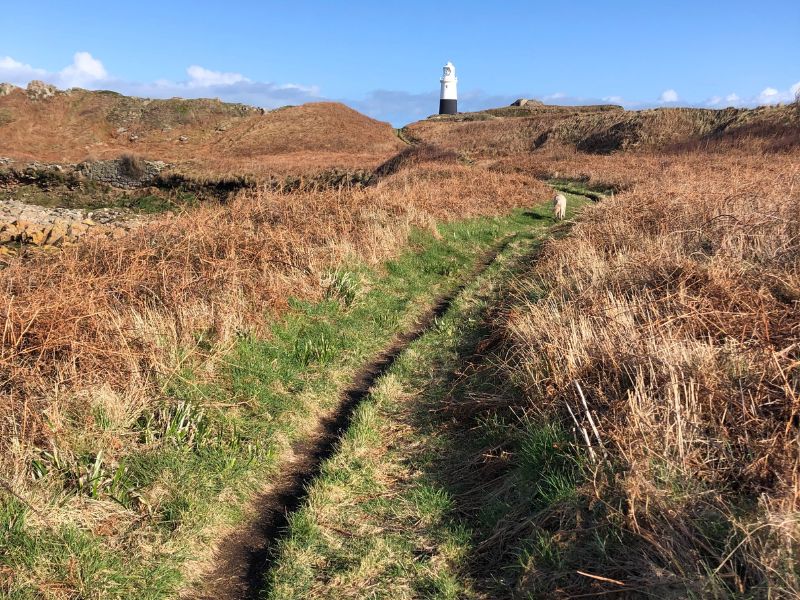
Energy restored, we pass along another long (but unswimmable) beach underneath another old fort (Tourgis), to yet another old fort (Clonque) that can only be reached at low tide across a narrow causeway. Across the sound we look upon Burhou Island, a puffin sanctuary.
Halfway up the “Zig-Zag Trail” a young man is hoping we’ve seen his mother and aunt who took a different trail from the airport (seems there’s not enough taxis on the island for all 19 plane passengers). They are celebrating her 60th in that fort that is now a rental available to Land Trust members - imagine the feeling of staying in a restored 1855 fort completely cut off from the island at high tide! Further up the zig-zag we find the ladies and send them on their way.
Back up on the high bluffs, in the fields by the Alderney Pig Farm we stumble across a Neolithic burial chamber from 4,000 BC. We can now overlook the Les Etacs, the offshore rock formations that in a few weeks will once again be home to 6,000 pairs of Gannets. Wikipidia says they’re the largest seabird in the North Atlantic with a wingspan of up to two metres, and closely related to Boobies. Locals say they’re extremely loud, cover the rock with white excrement, and are endlessly swooping down to eat blue eels out of the water. They are beloved, and we will not be alone when we return several times to witness 2% of the world’s gannet population on these two rocks, as well as enjoy beautiful sunsets.




With either a wrong or a fortuitous turn, depending on which of us you ask, I take Sarah down a precipitously steep grassy hill then back up the other side. Beautiful and literally breathtaking. Back on the main track, we pass by Telegraph Tower, from which during the Napoleonic War developed a secret signal language using 2 flags to communicate French troop movements with the larger Channel Islands of Guernsey (whom we’re allowed to like) and Jersey (whom we do not like, for reasons no-one can quite remember), and both of whom are reportedly much larger and less friendly than our blessed Alderney.
At the far end of the airport runway we stop to absorb the energy of the remaining gate walls to the Lager Sylt concentration camp. Nearby, almost unreachable through thick thistle and vines, is yet another sentinel outpost. I imagine a lonely German soldier, same age as my own boys, standing in that cement tube not much larger than himself, cold and alone for long hours watching over the channel for an attack that never came. I hope that sometimes he felt the beauty and power of nature that we feel as we complete the final cliffside section of our good old Up and Down Cliff Trail, back to where we started 16 km ago.

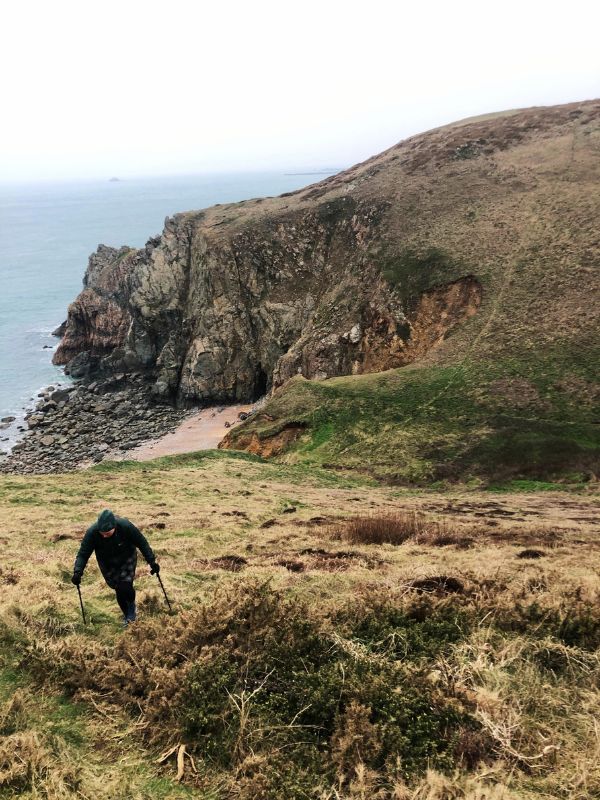





Subscribe now to get an email notification when a new post is published.
(Be sure to check your inbox to confirm your subscription.)
Currently in...
Monteverde, Costa Rica, for 2 months of cloud forest and community
Heading to...
Chicago/Montreal for Christmas, then Thailand (Chiang Mai), Vietnam (Hoi Ann, Feb-Mar). Please share any sites, people or ideas by email.
